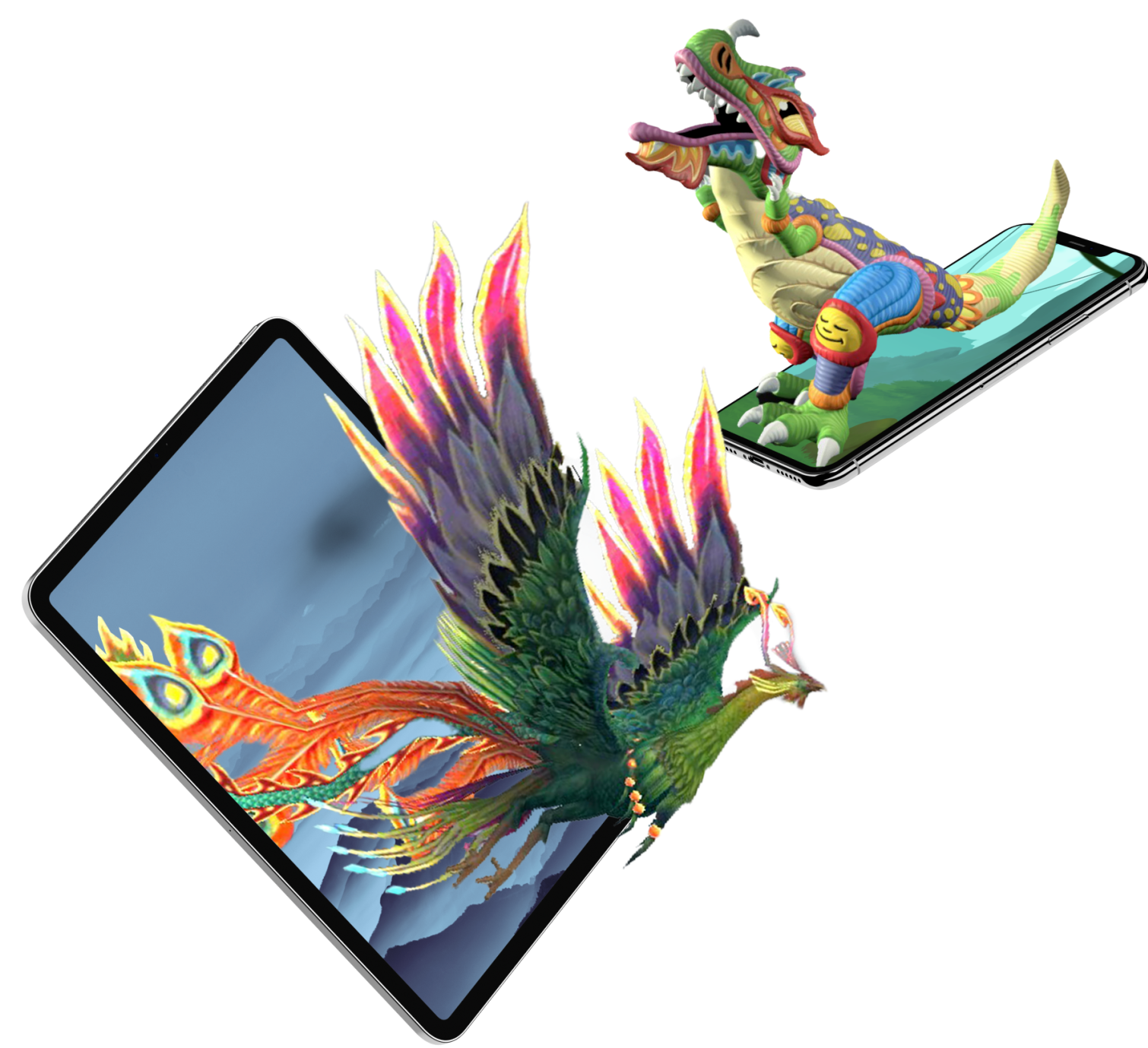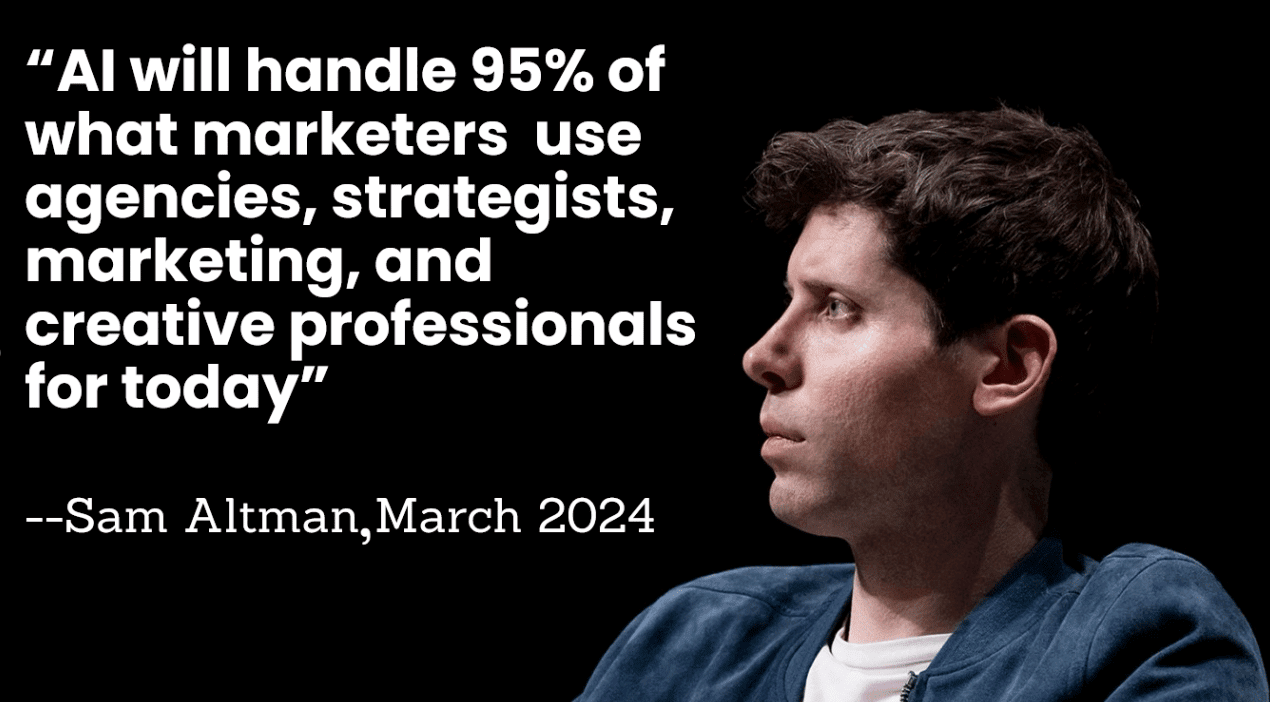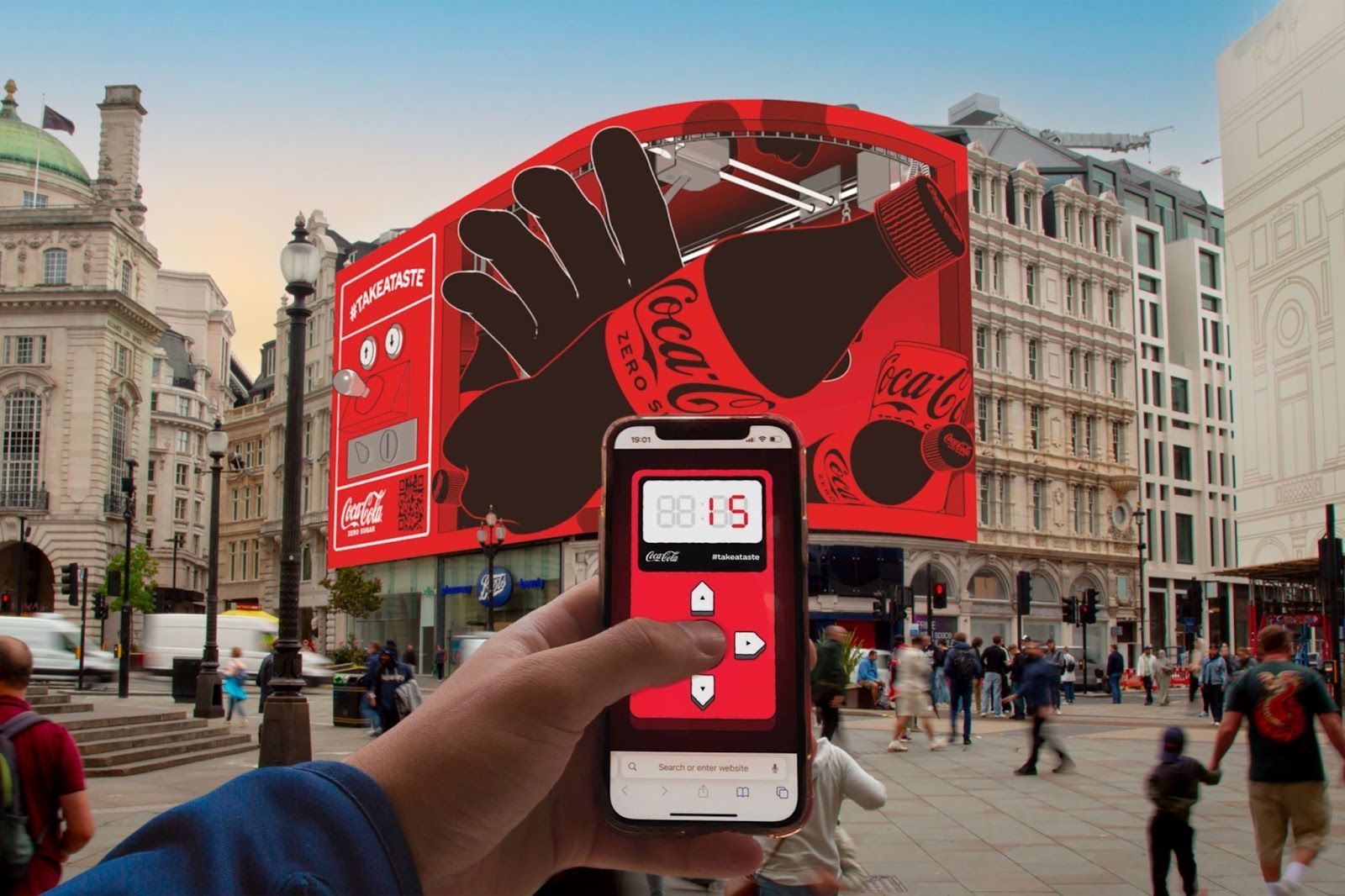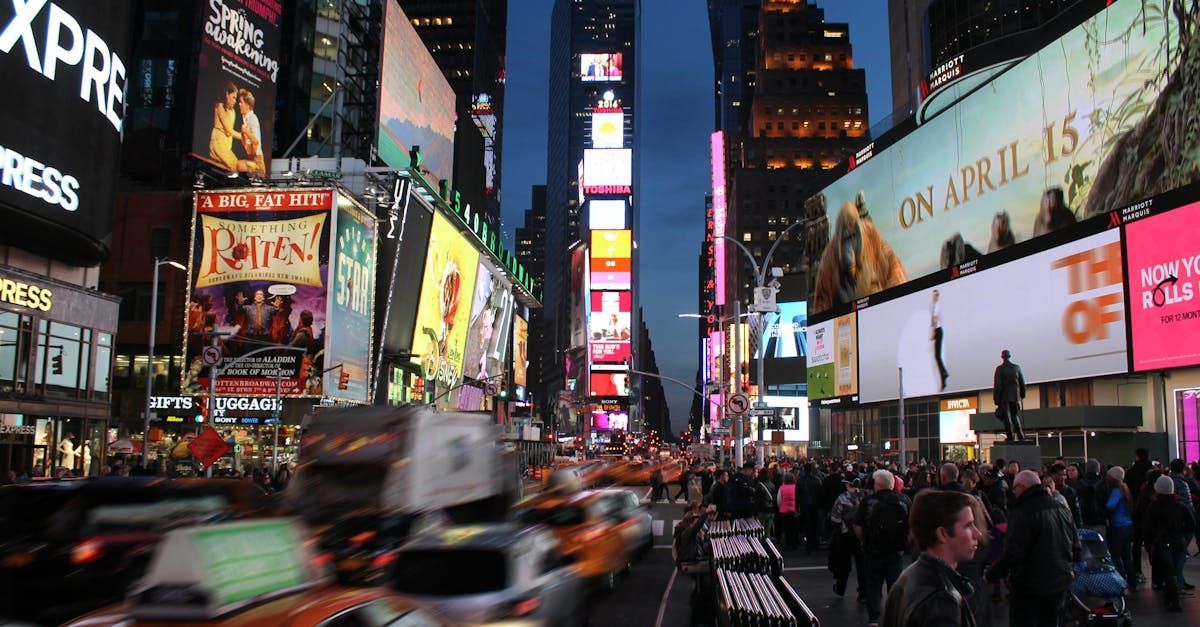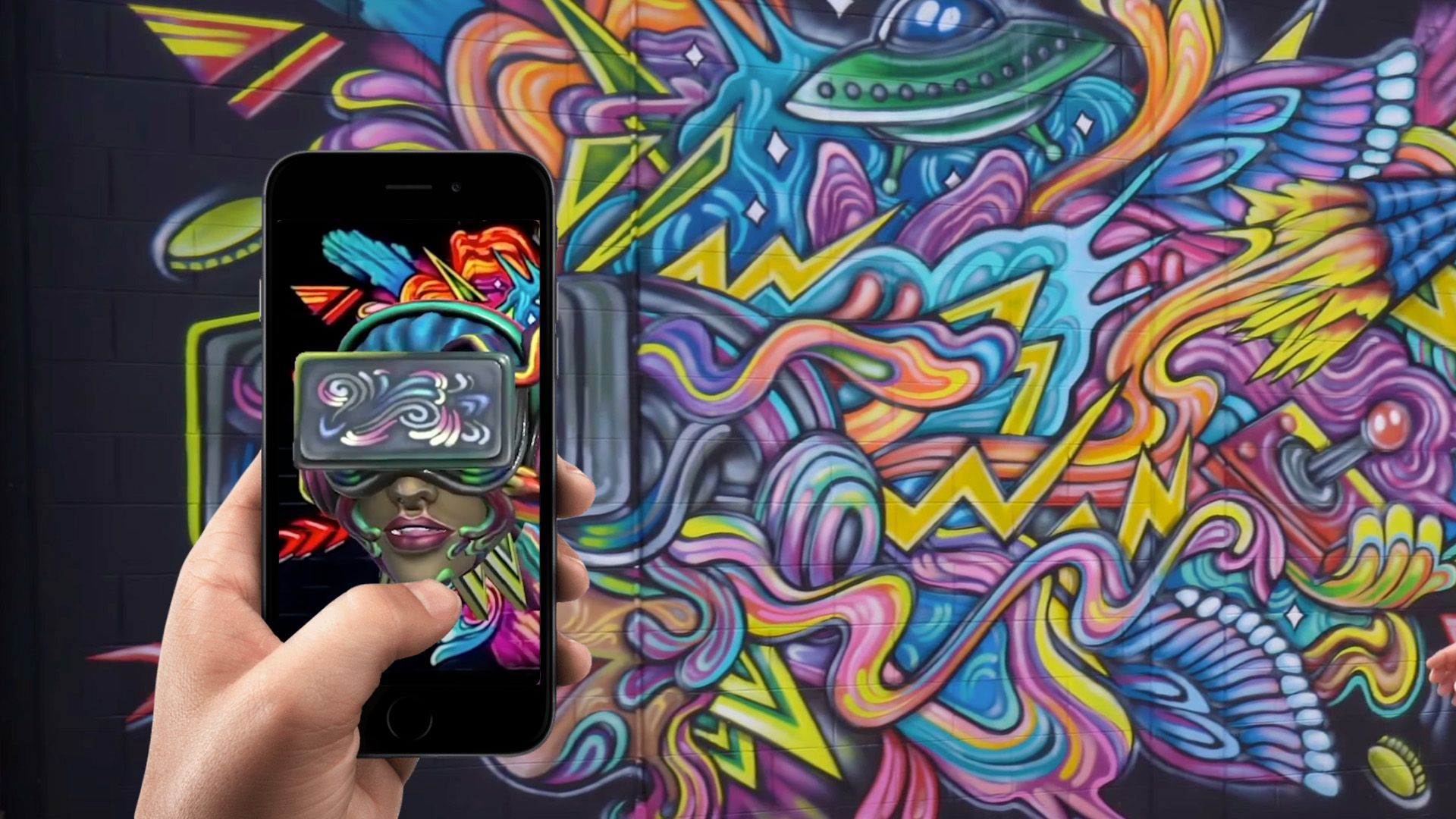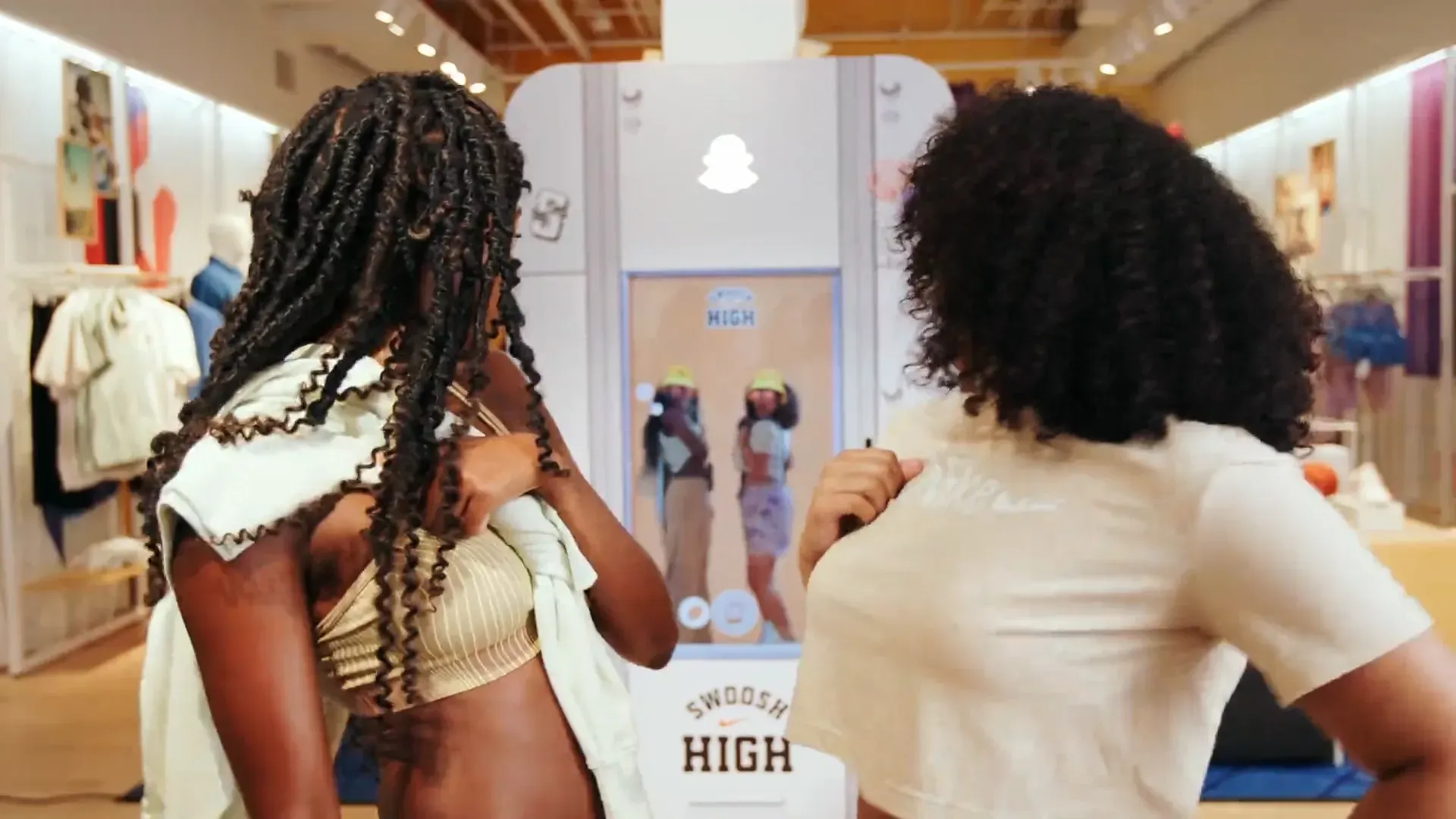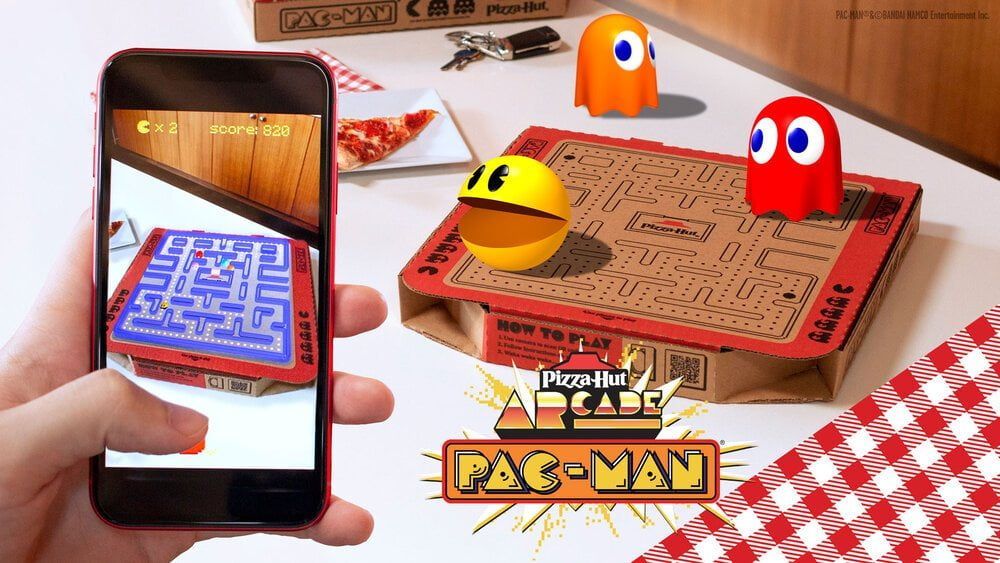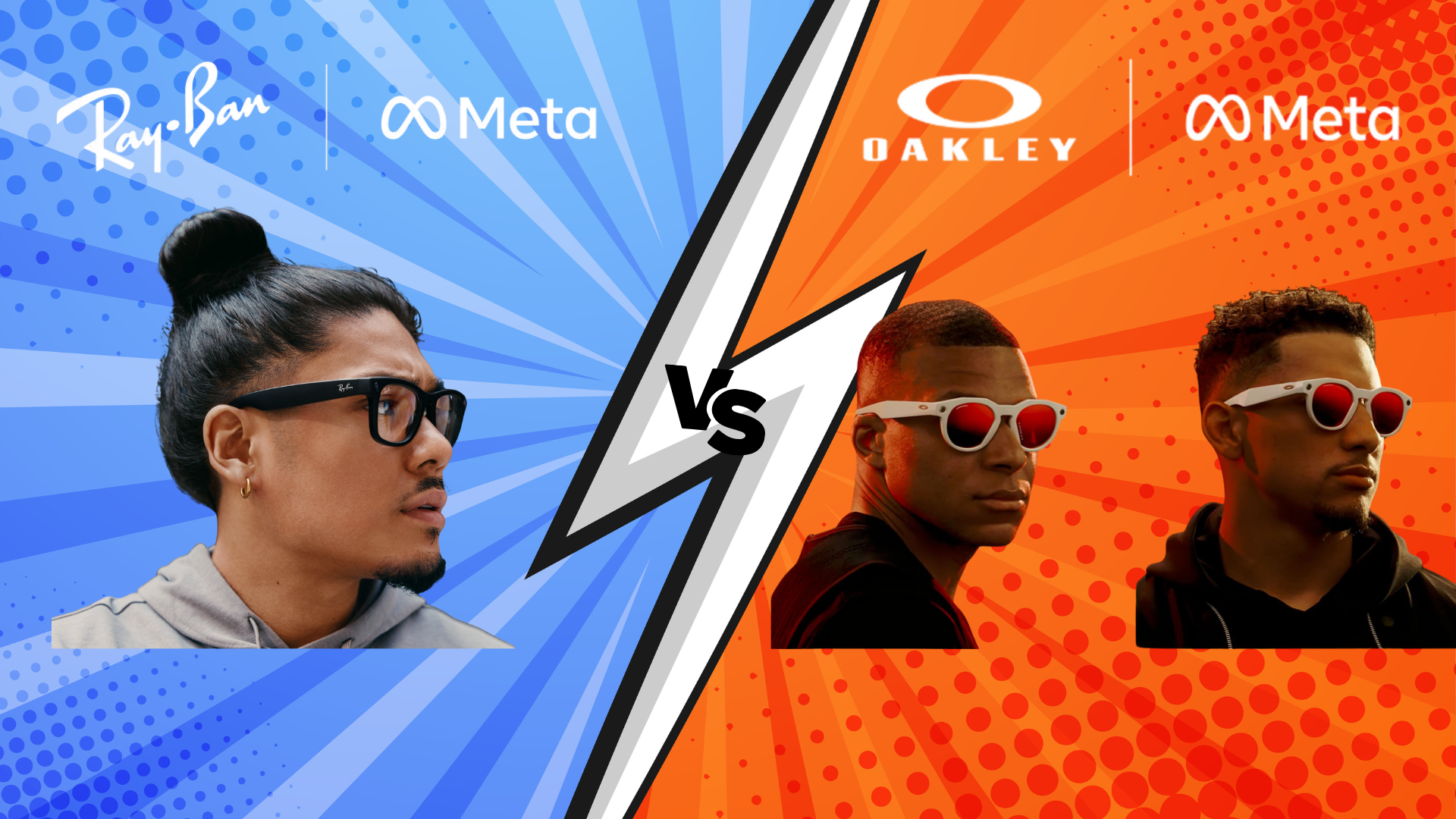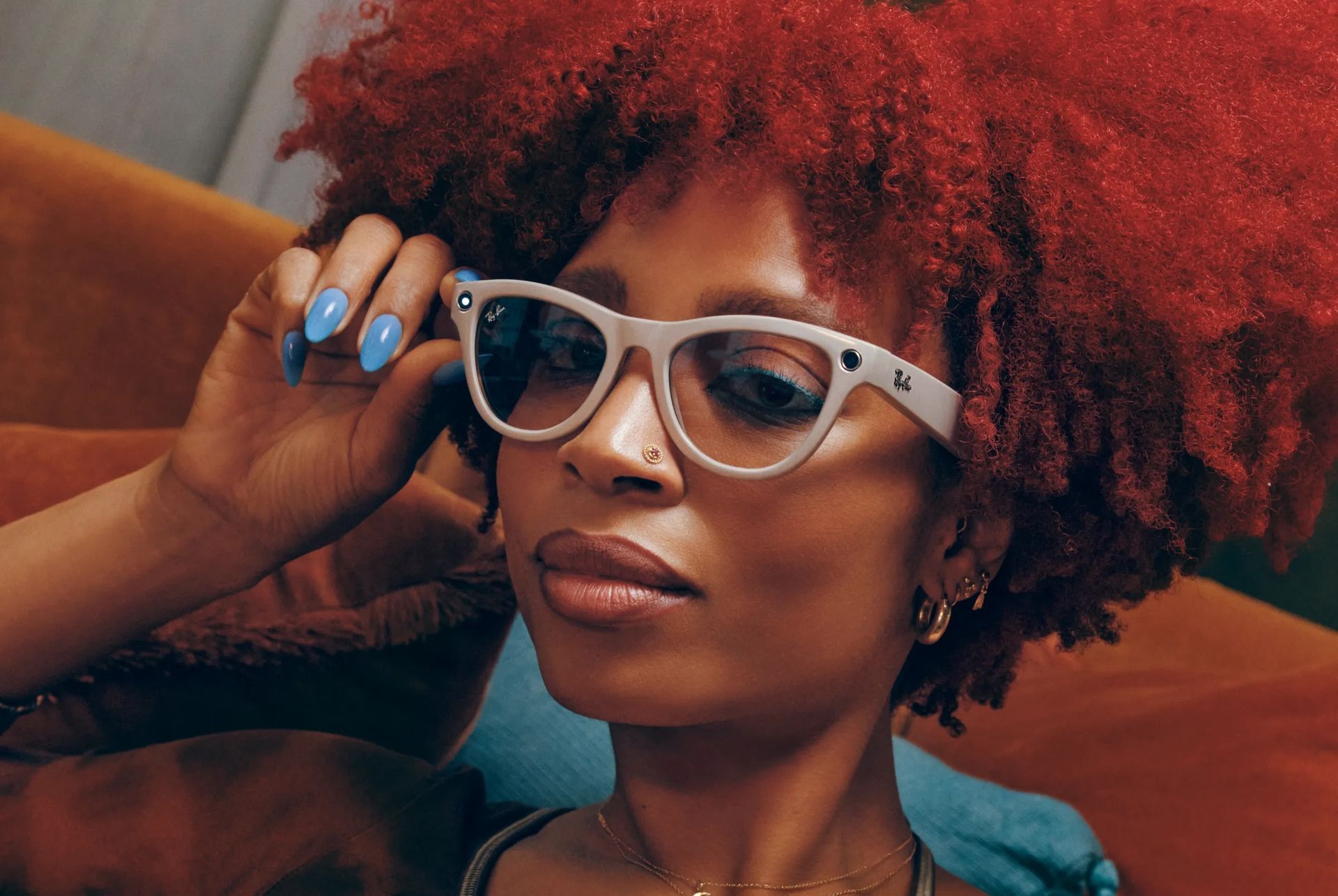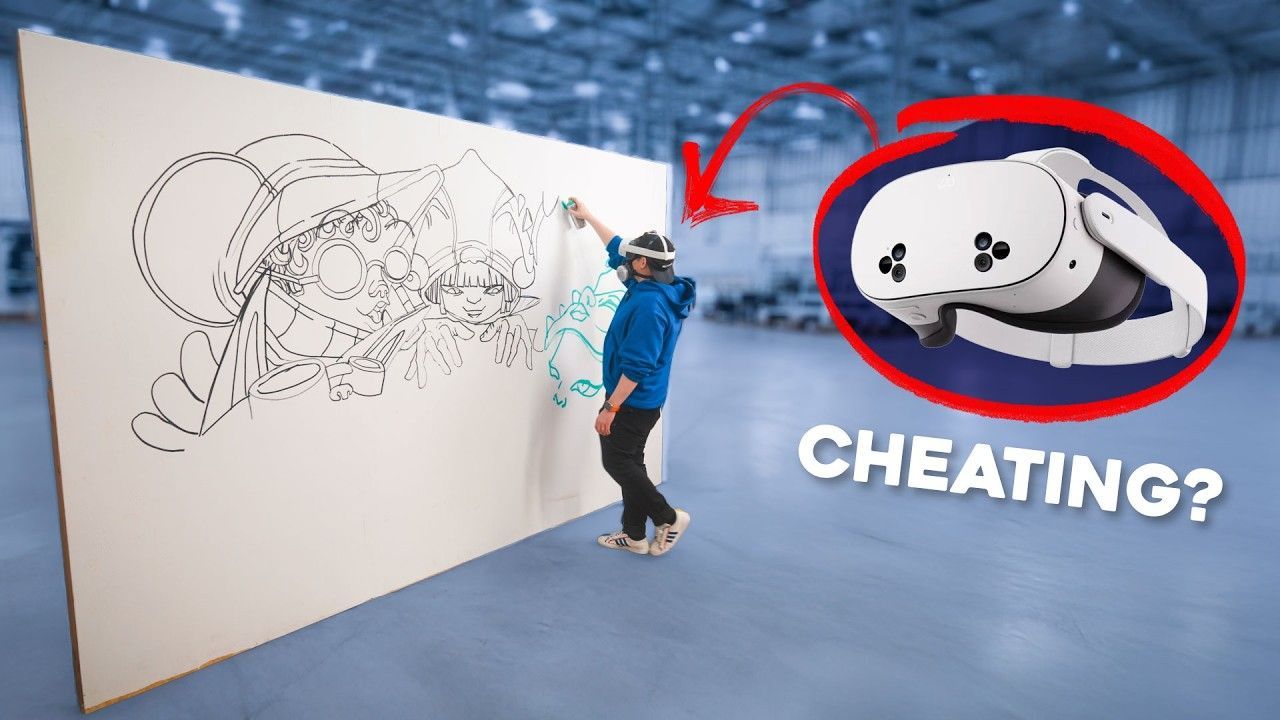Generative AI in Marketing: Transforming Content Creation
Executive Summary
- Generative AI is reshaping marketing: Tools like large language models (LLMs) and multimodal AI are enabling marketers to produce content and campaigns in days instead of months, driving unprecedented efficiency. McKinsey estimates generative AI could boost marketing productivity by 5–15%, translating to ~$463 billion in value annually.
- Immediate ROI and growth impact: Early adopters report quick wins. For example, CarMax used OpenAI’s GPT models to generate content in hours that would have taken
years for human teams, leading to spikes in page views and SEO rankings. JPMorgan Chase found AI-written ad copy doubled click-through rates (in some cases up to
4.5× higher) versus human-written copy. Such results within 0–3 months showcase AI’s rapid return on investment.
- Strategic imperative for leaders: According to OpenAI CEO Sam Altman, AI will handle “95% of what marketers use agencies, strategists, and creative professionals for today”. Marketing executives at Fortune 1000 firms must therefore treat generative AI as a strategic priority. Those who leverage AI as a
co-pilot for content creation, personalization, and decision-making will outpace competitors; those who sit on the sidelines risk being left behind.
- Human + AI drives creativity: Industry leaders stress that AI
augments but doesn’t replace human creativity. The most successful marketing teams use AI for scale and data-driven insights, while ensuring a human touch in brand voice and creative direction. As NVIDIA CEO Jensen Huang put it, “The type of content you’ll… generate will be practically infinite… from hundreds of [campaign examples]… to billions of generated content for every individual” – but every piece must still be on-brand and resonant. Winning organizations blend tech and human talent, using AI as a powerful tool rather than a crutch.
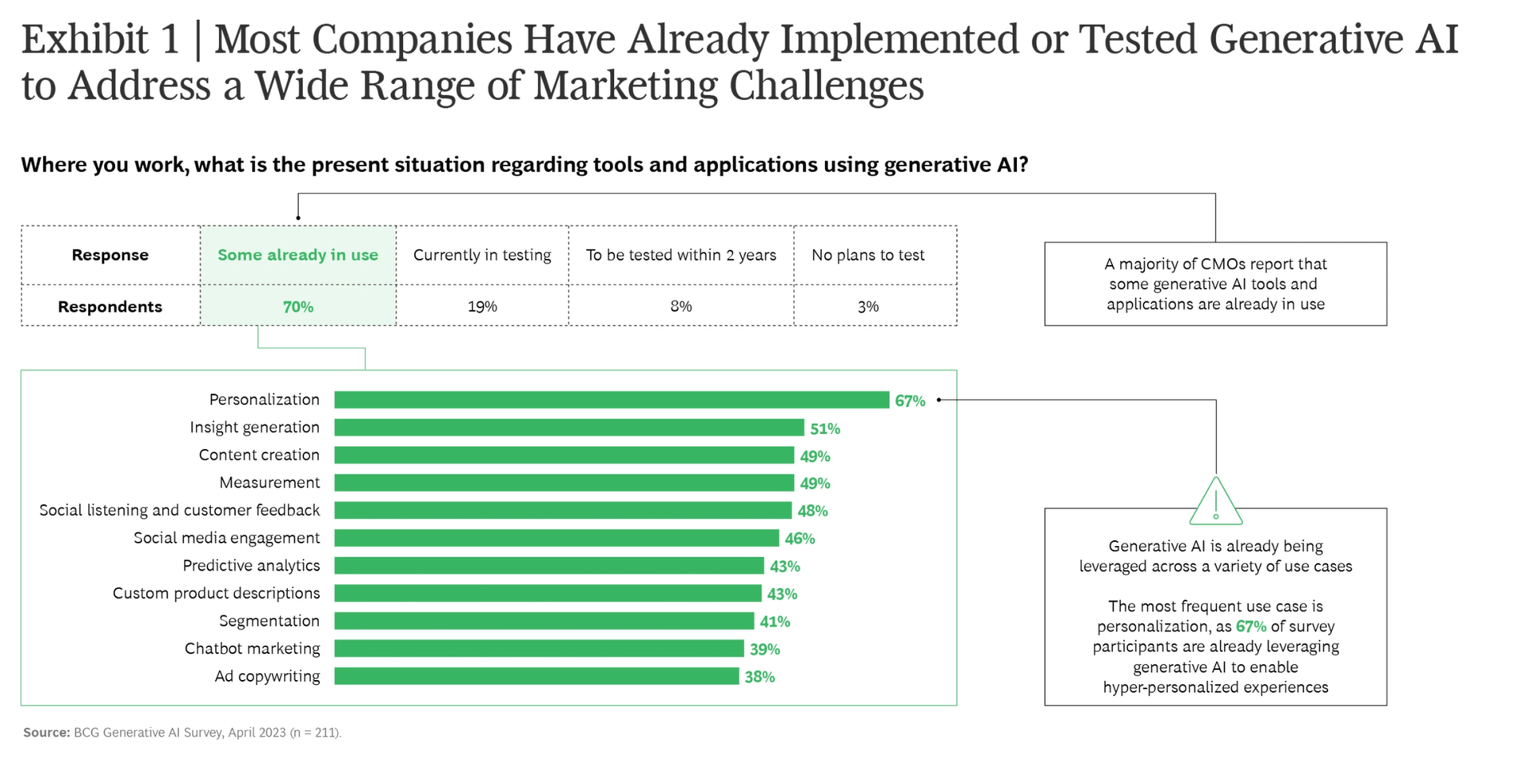
Generative AI: A New Era for Marketing Strategy
- From gut feel to data-driven: Generative AI is empowering marketers to base strategy on insights drawn from massive data. AI models can analyze customer behavior and preferences at scale, then generate tailored campaign ideas. This hyper-personalization at scale was once “holy grail” – now it’s within reach. For example, Netflix’s AI-driven recommendation engine personalizes content for 200+ million users, accounting for ~80% of viewing activity, illustrating how AI-driven personalization can lock in engagement.
- Speed and agility as competitive advantage: Marketing campaigns that used to take weeks of brainstorming and content production can now be executed in days or hours. AI co-creators like ChatGPT and Claude can draft blog posts, social copy, or even video scripts in a fraction of the time. According to Sam Altman, we’re nearing a reality where AI handles the vast majority of marketing planning and content tasks. This means teams can rapidly test and iterate – a crucial strategic shift. Marketers can run
thousands of ad variations and optimize on the fly, rather than betting on a single big idea.
- AI-native marketing organizations: HubSpot’s SVP of Marketing, Kieran Flanagan, predicts that “GenAI is going to rewrite how we do marketing.” He envisions AI-integrated teams where
prompts replace briefs, AI models generate first drafts of content, and human creatives serve as editors and “creative directors” for AI. In this AI-forward model, marketing departments become heavily engineer-led – with CMOs likely having an engineering or data background to manage AI-driven processes. The strategic takeaway: leading firms are reengineering their workflows and talent mix to fully exploit AI capabilities.
- Market adoption is accelerating: A recent industry survey found ~69% of marketers have already incorporated some form of AI into their strategies, and 78% expect to automate at least a quarter of their tasks with AI in the next 3 years. The AI era in marketing isn’t theoretical – it’s happening now. Leaders like Jensen Huang emphasize that companies must
“learn AI” and build internal AI competence; those who do will create content factories that feed ever-growing consumer demands. The era of AI-driven marketing strategy has arrived, and it rewards first movers.
Content Creation at Scale and Speed with Generative AI
- Exploding content volume without extra headcount:
Generative AI lets marketing teams dramatically increase output across blogs, social media, email, and ads. CarMax’s team, for example, leveraged GPT-3 to transform 100,000+ customer reviews into fresh web content. “We would have had to hire tens or hundreds of writers and taken years to generate this content… We did this in a matter of hours,” said CarMax’s CITO. The result was a surge in SEO traffic and a
huge content library created almost overnight. Similarly, Coca-Cola’s marketing group invited consumers to co-create AI-generated art for its “Real Magic” campaign, yielding 120,000+ unique images and multi-minute engagement times on their site. These examples show how AI can flood the top-of-funnel with content that drives traffic and awareness, without proportional budget increases.
- Multimodal content and new formats: Modern AI tools go beyond text.
Image generators (DALL·E, Midjourney, Stable Diffusion) allow marketers to create custom visuals or ad creative on demand. Coca-Cola’s DALL·E-powered campaign had users generate novel “ketchup in space” or futuristic ketchup images for Heinz, boosting social engagement 38% higher than previous campaigns. On the video front, AI platforms can turn scripts or blog posts into short videos in minutes –
VEED, for instance, auto-produces videos from text and helped users cut video production time by ~50% while increasing engagement. This multimodal content capability means marketing messages can be repurposed across formats (text, image, video, audio) at almost zero marginal cost, reinforcing campaigns on every channel.
- Personalization at scale: Generative AI enables one-to-one content personalization on a mass scale – a game-changer for top-of-funnel conversion. Starbucks uses AI-driven predictive models to send individualized offers via its mobile app, boosting loyalty and repeat sales by making each customer feel uniquely seen. Now, with LLMs, a marketer can prompt the AI to rewrite a product description
20 different ways for different personas or segments. As NVIDIA’s Jensen Huang described, instead of creating a few versions of an ad and picking one, in the future marketers will
generate thousands or even “billions” of ad variations, each tailored to a micro-segment – yet all on-brand and optimized for context. This level of personalization was impractical before, but generative AI makes it feasible to truly customize content for every audience slice, significantly improving relevance and response rates.
- Quality and consistency improvements: Beyond quantity, AI can help improve content quality. Tools like Grammarly and Writer.com use AI to enforce style guides, fix grammar, and optimize readability at scale. Specialized AI (e.g. for SEO) can dynamically suggest keyword improvements and header optimizations to boost organic performance of blog posts. While human review is still essential (to catch any AI inaccuracies or tone issues), these assistants act as always-on copy editors and SEO consultants. The immediate benefit is more consistent, polished content across large teams. For instance, HubSpot’s AI Content Assistant (powered by OpenAI) can generate blog drafts and then suggest edits to match the brand voice, allowing marketers to accelerate production without sacrificing quality. In short, generative AI serves as a high-speed first draft creator and an intelligent editor, freeing human marketers to focus on strategy and creative tweaks.
AI-Driven Strategy: Hyper-Personalization and Decision Making
- Hyper-personalization & customer journey orchestration: AI is enabling marketers to move from segment-level targeting to true individual-level marketing. Generative models can craft personalized emails, landing pages, or product recommendations for each user based on their behavior data. McKinsey notes this “holy grail” of delivering the right offer at the right time is now much closer to reality. For example, Sephora’s AI-driven Virtual Artist analyzes a customer’s facial features and preferences, then instantly recommends and even visualizes makeup products tailored to that individual. This level of personalization at scale drives higher conversion rates and customer satisfaction (as Sephora found with increased online sales and fewer product returns). Strategically, marketing leaders are leveraging AI to turn customer data into bespoke content and experiences – a key differentiator for brands in competitive markets.
- Real-time insights and optimization: Generative AI tools are not just content creators, they’re also always-on analysts. They can quickly interpret trends from large datasets (social media feeds, customer feedback, web analytics) and even generate human-friendly insights or visualizations. This means strategy can be adjusted on the fly. For instance, AI-driven social listening platforms can summarize millions of social posts and suggest emerging consumer pain points or interests. Marketers can then prompt an AI to propose campaign ideas addressing those trends, essentially closing the loop from insight to content execution in real time. The ability to automatically A/B test countless creative variations (through AI-generated ads or emails) and immediately amplify winners is another strategic shift. Campaign optimization becomes continuous and automated, guided by AI’s rapid learning on what content resonates best with each audience segment.
- Decision support and strategy simulation: Beyond content, large language models serve as strategic brainstorming partners. Marketing teams can use an LLM to simulate how a campaign might perform (feeding it context and asking it to predict outcomes or risks), or to generate a SWOT analysis for a go-to-market plan. While not infallible, these models can surface non-obvious ideas or flag potential issues by drawing on their vast training knowledge. AI copilots like ChatGPT are already being used to draft marketing plans, analyze competitive messaging, and even suggest budget allocations based on historical data patterns. This augments human decision-making: the AI provides a data-backed second opinion or a creative spark, and human strategists apply judgment and domain knowledge. The net effect is faster, more informed strategic decisions – a critical advantage in fast-moving markets.
- Aligning AI with brand and ethics: A strategic consideration is ensuring AI-driven content and decisions align with brand values and compliance. AI can inadvertently produce off-brand or insensitive outputs if not guided properly. Leading organizations mitigate this by
training custom AI models on their brand voice and guidelines. Anthropic’s Claude, for example, emphasizes AI safety and can be tuned to follow specific ethical guidelines. Many Fortune 1000 firms are developing internal AI “guardrails” – from legal-approved prompt templates to bias-checking algorithms – to ensure the AI’s thousands of outputs remain brand-safe and inclusive. Strategically, the companies that succeed with AI will be those that treat it not as a black box, but as a carefully governed extension of their team. This means involving legal, PR, and HR in the rollout of AI in marketing, and establishing clear policies on review and approval of AI-generated content. When done right, AI becomes a trusted strategic ally operating within set boundaries.
The Human–AI Creative Partnership
- AI as creative collaborator, not replacement: A clear consensus among industry leaders is that while AI can generate content and ideas at scale, human creativity and intuition remain irreplaceable. “These tools aren’t a replacement for human creativity… They
augment the skills of artists and marketing professionals,” NVIDIA’s Jensen Huang emphasizes. AI might draft copy or suggest design elements, but humans provide the brand voice, emotional nuance, and big ideas that truly connect with other humans. The best outcomes occur when human marketers treat AI as a creative collaborator – using it to generate options and then applying their own judgment to refine and curate. As one marketing VP quipped, “AI can produce the lyrics, but humans still write the music.”
- Avoiding the “faceless algorithm” trap: Marketers must be cautious not to over-automate content to the point it feels inauthentic. Greg Isenberg, CEO of Late Checkout, warns that “If people think your content, copy, or designs were made by AI, you’ve already lost. Humans crave the human touch, authenticity… When your audience sniffs out AI, trust plummets”. Bland, generic AI-generated content can erode brand trust and distinctiveness. The strategic approach is to blend tech and human creativity so seamlessly that audiences
can’t tell where one ends and the other begins. This might mean deliberately leaving a bit of human “imperfection” – a witty aside in a blog, a colloquial tone on social media – to signal there’s a real personality behind the brand. Some brands are even highlighting “human-made” content as a premium offering in an AI-saturated content landscape. The bottom line: use AI to scale and assist, but keep humans in the loop to ensure content has soul and storytelling magic.
- Upskilling the marketing team: Embracing the human–AI partnership means evolving the skills within marketing teams. Creative staff are learning prompt engineering – knowing how to ask AI for what they need – and becoming adept at editing AI outputs. Meanwhile, data analysts and engineers are joining marketing departments to manage AI tools and pipelines. Kieran Flanagan notes that to thrive in a GenAI world, marketing teams should be “heavily engineer-led” and approach marketing “with an engineering mindset using AI”. This doesn’t eliminate traditional creatives; rather, it pairs them with technical talent. Copywriters become editors and strategists, focusing on directing AI and polishing its outputs. Designers might use generative image tools for concepts, then refine the best ones manually. Forward-thinking organizations are providing training on AI tools to all team members, ensuring that “AI literacy” is as fundamental as social media literacy became a decade ago.
- Ethical and creative oversight: With great power comes great responsibility. AI can inadvertently produce biased or incorrect content, so human oversight is non-negotiable. Marketers must rigorously fact-check AI-generated copy (to avoid misinformation) and review imagery for appropriateness. Setting up an AI ethics review process or content approval workflow is a best practice – e.g., requiring a manager to approve any public-facing AI-written social posts until the AI’s reliability is proven. Leaders like Jensen Huang stress investing as much in the
safety of AI as in its capabilities. In practice, this means maintaining transparency (disclosing AI involvement when appropriate), respecting intellectual property (using tools that have licensed training data or properly attributing artists), and protecting customer data privacy when using AI on internal data. A human-guided, ethical deployment of AI not only mitigates risks but also builds consumer confidence that AI is being used in service of better experiences, not as a surveillance or spam tool.
Case Studies: AI-Powered Marketing Success Stories
- CarMax – Content at Scale for SEO:
CarMax, the largest used-car retailer in the US, used OpenAI’s GPT models (via Azure) to generate thousands of car review summaries for its website. Over 100,000 customer reviews were distilled into rich, SEO-friendly content for each make/model/year. Implementation took just a few months, and the impact was immediate – CarMax saw a spike in organic traffic and improved search rankings, contributing to record online sales. The AI-driven content library replaced an effort that would have taken an army of writers years to produce.
Timeline: Pilot in late 2022; full rollout by early 2023.
Outcome: Q4 2022 revenues jumped 49% year-on-year (amid an economic slowdown), partially attributed to the enhanced digital experience. CarMax’s Shamim Mohammad noted the project’s efficiency: “We would have had to hire hundreds of writers… we did this in hours”.
- JPMorgan Chase – AI-Optimized Ad Copy: Global bank
JPMorgan Chase partnered with AI firm Persado to generate marketing copy for credit card and mortgage ads. In A/B tests, the AI-generated ads consistently outperformed human-written versions – one pilot saw click-through rates increase by as much as
450%. For example, a human-written line “Access cash from the equity in your home” was revamped by AI to “It’s true — you can unlock cash from the equity in your home,” which drove significantly higher engagement.
Timeline: Initial pilot in 2018; after seeing strong results, Chase signed a 5-year deal with Persado in 2019 to deploy AI copy across its business.
Outcome: The bank reports substantially higher click-through and conversion on digital ads, and has expanded AI writing to email campaigns and even internal communications. Chase’s marketing lead noted that AI suggested creative phrasing “a marketer… likely wouldn’t have [used]. And they worked.” This case shows AI’s ability to unlock more persuasive messaging and immediate ROI in the form of better response rates.
- Coca-Cola – AI-Generated Creative Campaigns: Beverage giant
Coca-Cola embraced generative AI to engage consumers in content creation. In 2023, Coke’s “Create Real Magic” platform (built with OpenAI’s DALL·E 2 and GPT-4) invited fans to create AI-generated art using iconic brand imagery. Within its first weeks, users generated over 120,000 images, dwelling ~7 minutes on the site per visit as they played with creative prompts. Coke also launched an AI-designed flavor, Y3000, with a campaign blending virtual and real-world experiences (including interactive billboards).
Timeline: Partnership with OpenAI announced March 2023; “Real Magic” contest ran in mid-2023.
Outcome: The campaign earned extensive media buzz and social media engagement (the AI art contest saw Cheaper and faster creative production has allowed Coca-Cola’s marketers to iterate on branding and product concepts with minimal risk – effectively crowd-sourcing innovation from their audience via AI. The CMO of Coca-Cola noted that
testing, learning, and scaling ideas using AI is now a core strategy for maintaining the brand’s cultural relevance.
- Heinz – DALL·E for Visual Brainstorms: To reenergize its brand,
Heinz ran a bold creative experiment: it used the DALL·E image generator to answer the question “What does ketchup look like?” Consumers were shown AI-rendered images of ketchup bottles in various scenarios (astronaut ketchup, medieval ketchup, etc.), nearly all of which resembled Heinz’s iconic bottle shape. Heinz turned this into a marketing push, sharing the quirky AI images on social media and even inviting the public to submit their own AI ketchup art.
Timeline: Campaign launched in 2022 as one of the first AI-driven brand experiments.
Outcome: The social campaign’s engagement rate was 38% higher than Heinz’s previous campaigns, and it generated press coverage highlighting Heinz’s innovative edge. Internally, the Heinz team also gained a trove of crowd-sourced creative inspiration for future ad visuals and learned that their brand was so synonymous with “ketchup” that even an untuned AI visualized Heinz – a testament to their brand equity. This case underscores how generative AI can deliver both marketing results
and strategic insight (in this case, confirmation of brand dominance) in a fun, cost-effective way.
(Each case study above details the implementation steps, timeline, and outcomes that illustrate AI’s tangible impact on marketing performance.)
Comparison of Top AI Marketing Tools
The table below highlights leading AI tools that marketing teams are leveraging for content creation across blog, social, email, design, and video. These tools are selected for their strong track record (immediate ROI within 0–3 months) and capabilities beyond simple text generation.
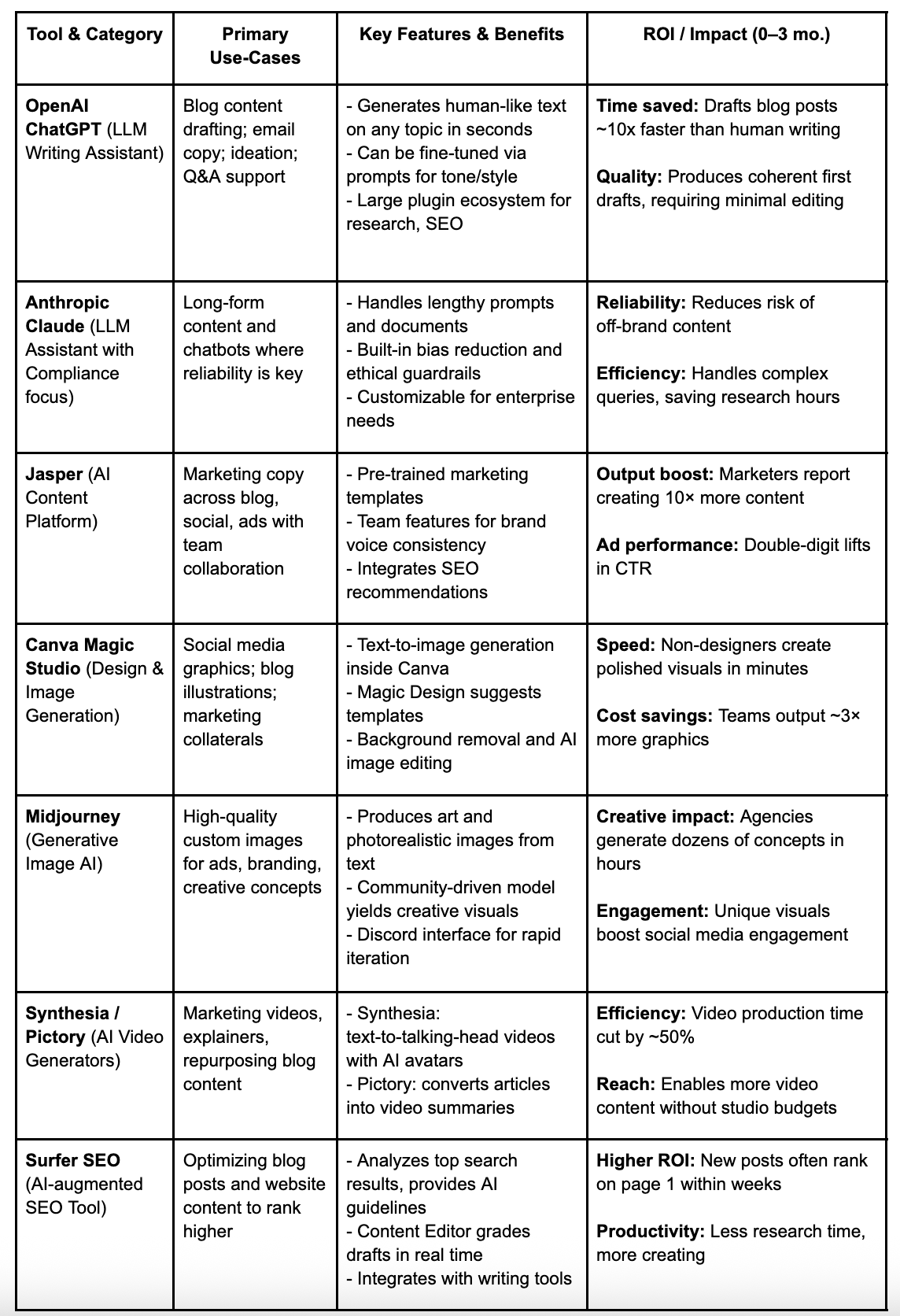
Table Notes: The ROI/Impact highlights are based on reported case studies and user data. For instance, Pictory’s 50% video production time reduction is documented from user surveys, and Heinz’s 38% engagement lift came from an AI-generated creative campaign. “Immediate ROI” often comes in the form of time saved (e.g. faster content creation), higher engagement (CTR, social metrics), or cost savings (less need for outsourcing), typically observed within the first 1–3 months of adopting these tools. Each tool above addresses a different facet of content creation – from writing to design to distribution – and many can be used in combination for compounding benefits.
Conclusion and Recommendations
Generative AI is not a future trend – it’s a present reality transforming how marketing teams strategize and create. Marketing leaders at Fortune 1000 companies should treat AI as a force multiplier for their teams. Start with high-ROI use cases like content generation and personalization in a pilot project, then scale up rapidly if successful. The case studies and tools discussed in this report illustrate that, when implemented thoughtfully, AI can drive significant growth in top-of-funnel metrics (traffic, engagement, leads) while also improving efficiency and reducing costs.
That said, success with AI in marketing requires more than just tools – it demands a cultural shift. Encourage your teams to experiment with AI, upskill them in data and prompt engineering, and foster a creative process where human insight and AI output are interwoven. Put clear guidelines in place to ensure brand voice, accuracy, and ethics remain front and center. As Greg Isenberg noted, the winners will be “the storytellers who use AI as a tool, not a crutch,” delivering human experiences enhanced by technology. In practice, this means using AI to handle the heavy lifting of content volume and analysis, while marketers focus on strategy, big creative ideas, and relationship-building with customers.
In summary, generative AI offers a historic opportunity to reinvent marketing strategy and content creation. Executives who move now to integrate AI will not only boost their marketing ROI in the short term, but also future-proof their organizations for the AI-driven business landscape ahead. The transformation has begun –
in this new era, the most effective marketing teams will be those that are part creator, part engineer, and fully data-driven.
TALK TO A PRO
We're here to bring your brand to life!
Stay Connected with BrandXR
Create Augmented Reality for Free!
Create, Publish, and Measure 3D Augmented Reality Experiences Without Having to Code.
